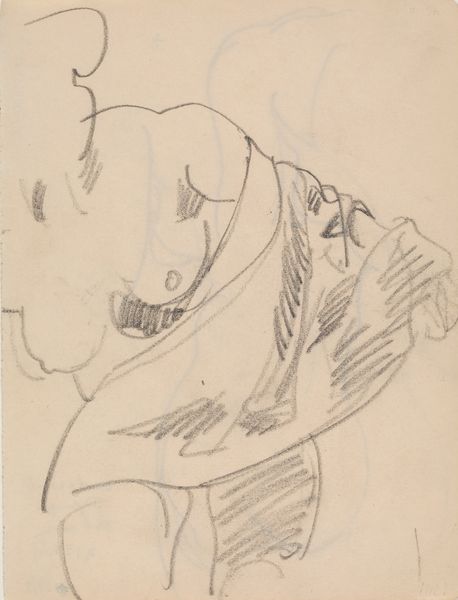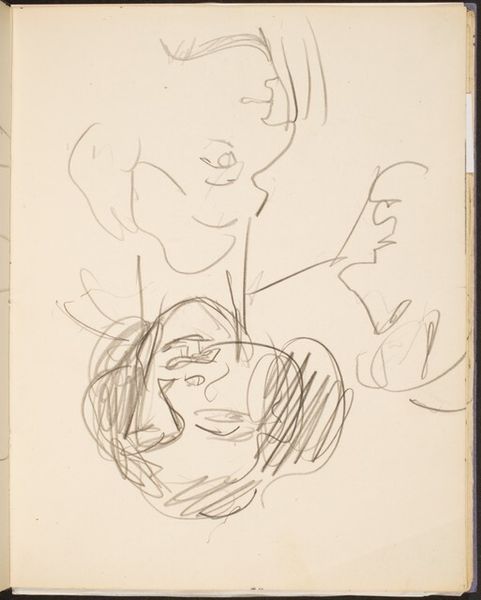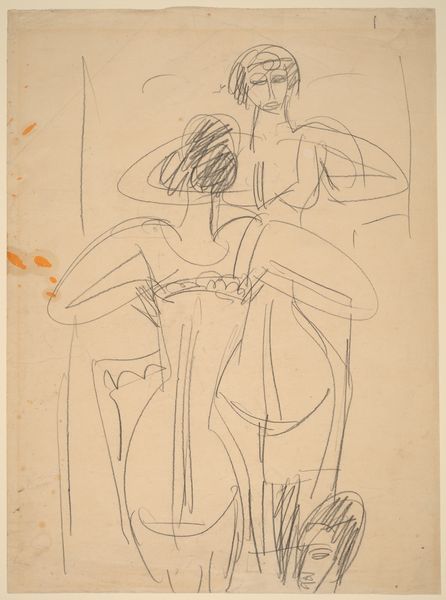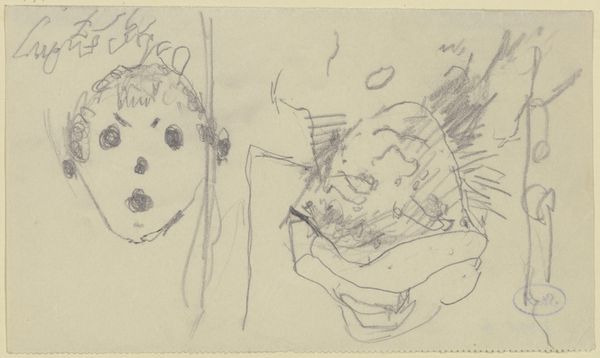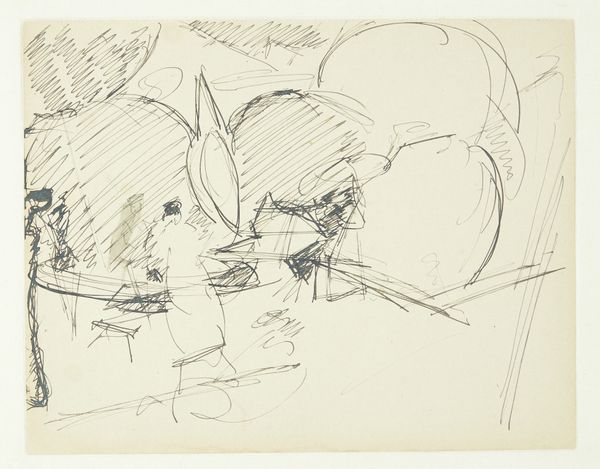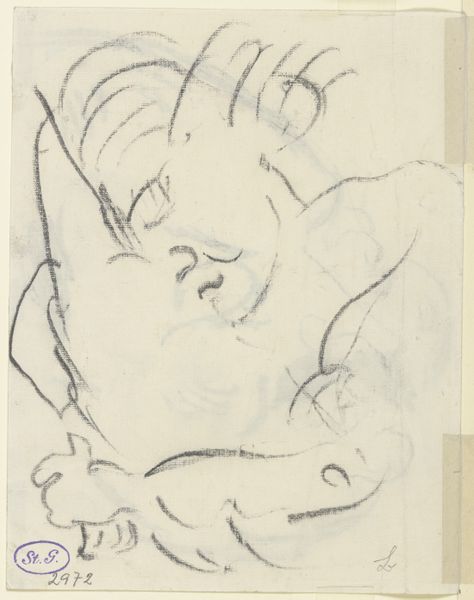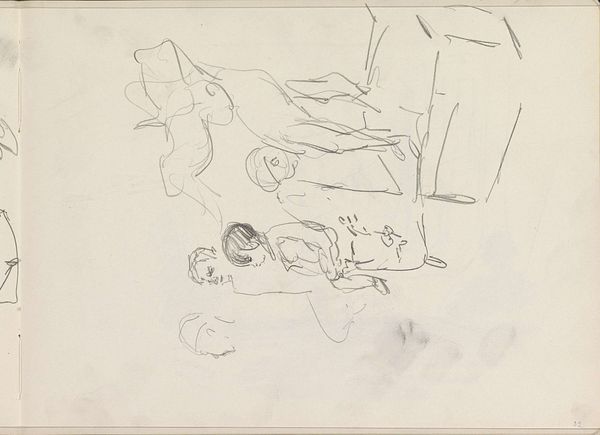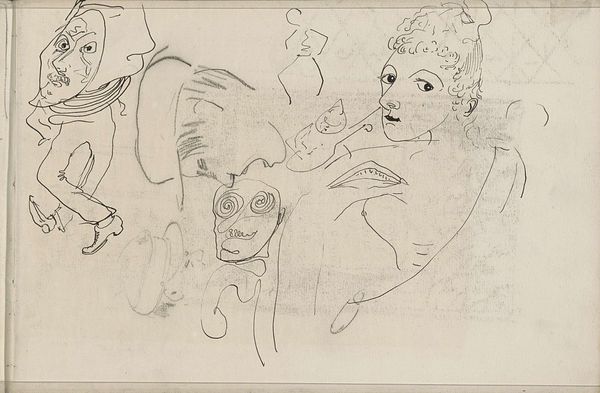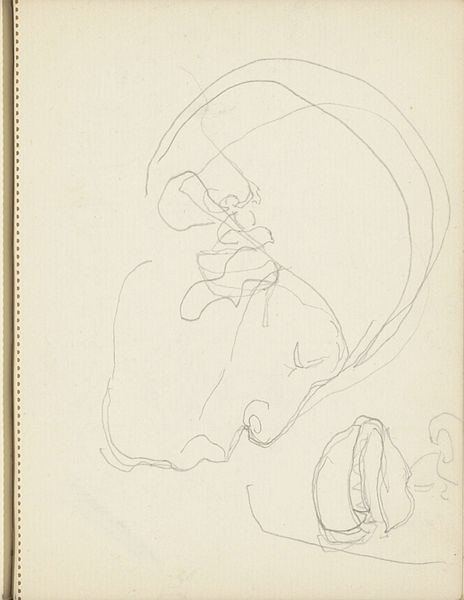
drawing, pencil
#
portrait
#
drawing
#
pencil
#
symbolism
Dimensions: height 203 mm, width 181 mm
Copyright: Rijks Museum: Open Domain
Editor: This is Leo Gestel’s pencil drawing, "Woman Smelling Flowers in a Vase," created sometime between 1891 and 1941. The simple lines and subdued tones give it such a contemplative, almost melancholic mood. How do you interpret this work, especially considering the historical context? Curator: It's fascinating to consider this drawing within the Symbolist movement. The act of smelling flowers can be seen as a sensual experience, loaded with meaning, but within a historical context of stifled female sexuality and prescribed social roles. Consider the woman's averted gaze—is it a sign of inward reflection, or a symptom of societal constraint? Is Gestel commenting on the limited avenues available for women to experience pleasure and agency during his time? Editor: That's a perspective I hadn't considered! So, the vase of flowers becomes more than just a still-life element? Curator: Exactly. It's not merely decorative. The flowers, the vase, even the tea service sketched in the background - they’re props in a performance of femininity. Gestel uses these everyday objects to explore deeper themes of gender, desire, and the female experience. Do you notice the deliberate ambiguity in her expression? Editor: Yes, it’s really subtle, almost unfinished. I appreciate how your reading brings social issues into my understanding of this piece. Curator: Art is never created in a vacuum. Understanding the cultural context, the power dynamics at play, opens up richer, more relevant interpretations. Perhaps this drawing isn't just about a woman smelling flowers, but about the complexities and constraints of being a woman during a transformative period in history. Editor: I'll definitely look at art differently now, considering the broader societal implications. Thanks for sharing this. Curator: It’s by connecting art history to contemporary thought that we make it truly relevant.
Comments
No comments
Be the first to comment and join the conversation on the ultimate creative platform.
